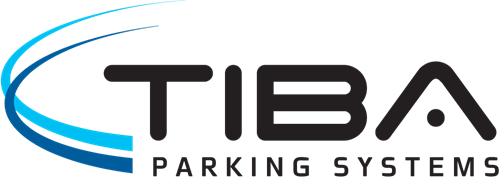Urbiotica: Guiding the Smart City
Which Is Better, Iot Sensors or Cameras?

Smart Cities draw on all the capabilities of the most advanced technologies to make life easier for citizens in areas such as urban mobility. Here, focusing on improving traffic and circulation, we will address an issue that often raises doubts when discussing projects with our clients: are IoT sensors or camera-based detection better?
Each type of detection has a number of usage characteristics that may make them more appropriate depending on the circumstances of each project. Which of the two options is better for managing parking and mobility in cities more efficiently, less expensively and more effectively? Do they have the same technological capacity or operate with the same technology?
At Urbiotica we want to clarify this issue, so in this article we will first talk about what IoT sensors are, how they work and what their advantages are, and then we will do the same with cameras. And finally, we will draw up a balance or summary.
What are IoT sensors and how do they work?
IoT sensors are devices that are installed under the surface by drilling a hole in the asphalt. Their purpose is to carry out tasks such as single-space detection to monitor the vehicles occupying and vacating parking spaces.
They are very quick to install and can be fixed in the kerb, avoiding the need to remove vehicles if preferred. Once installed, the sensor will never require maintenance or intervention during its 10-year service life. This is because the intelligence resides in the platform not in the sensor, in the case of Urbiotica, and it is from there that calibrations and adjustments are made, which also minimises energy consumption and guarantees their long life.
When talking about the characteristics of IoT sensors and their specific functions to favour sustainable urban mobility, parking space monitoring and traffic movement, we can talk about the following points:
Real-time detection of vehicles entering and leaving parking spaces
These sensors can, in real time and with a high degree of reliability (>98%), detect vehicles occupying and vacating parking spaces. This is made possible by the high sensitivity of the advanced technologies, which allow all types of interference to be discriminated for the correct detection of vehicles. In other words, they distinguish electromagnetic interference or false events, thus achieving extraordinary reliability.
Furthermore, such detection sensors are not affected by adverse weather conditions such as rain, snow or airborne dust particles. As a result, their technology is able to reliably detect when a parking space is occupied by a car and when it leaves. The U-Spot sensor is currently installed and operating successfully in cities with very extreme climates such as Burlington, Doha or Vienna.
What are detection cameras and how do they work?
On the other hand, with detection cameras in the parking spaces, parking space occupancy can be monitored by collecting images and processing them using specific software based on Artificial Intelligence and Deep Learning.
This instantly detects any change in occupancy and is 99% reliable over its lifetime. This software allows up to 50 parking spaces to be covered with a single camera, but they must be installed in places of a certain height and where there are no obstacles preventing the correct viewing of the parking spaces. The most notable features of these devices are as follows:
Installation in high places
As mentioned above, parking enforcement detection cameras are installed in high locations allowing images free of impediments or barriers such as trees, traffic signs and the like.
In this way, they provide an appropriate panoramic view of the parking zones and it is important that the facilities are properly managed to avoid visual barriers.
Image processing with Artificial Intelligence
On the market there are cameras installed in parking spaces that take pictures, store them in the cloud and process them with Artificial Intelligence. In this way, they enable aspects to be controlled such as the occupancy of parking spaces as well as the correct use of regulated or reserved parking spaces.
These cameras use advanced technologies and take images that respect the privacy of vehicle data. This prevents the identification of number plates or the faces of people in the vehicles.
IoT sensors vs. cameras: which is more efficient?
So far we have seen the most important features of underground sensors and detection cameras for parking occupancy management and vehicle guidance, or the monitoring of reserved or regulated parking spaces, to improve mobility. These are two of the most widespread uses when developing technologies based on Artificial Intelligence or real-time data management in the field of urban mobility.
So the relevant question is: Which technology will provide the most effective and appropriate control in the context of smart cities? Remember that we are talking about solutions that communicate through IoT and advanced communication networks.
Given the diversity of conditions and requirements in each project, both IoT sensors and detection cameras play a key role. Therefore, neither is better than the other, as both offer very high reliability in detection. Their efficiency depends largely on the specific circumstances of each project.
- M2M sensors (IoT) have one major advantage, and that is their independence from gateways for transmitting data. This feature makes them exceptionally efficient, especially in parking areas with scattered parking spaces, such as loading and unloading bays or spaces for people with reduced mobility (PRM).
- They are also highly recommendable for parking facilities in areas with obstructed views, such as those surrounded by trees or equipped with canopies, which can hinder camera ranges. Furthermore, the sensors’ ability to operate without requiring a dedicated power supply can make a difference in certain projects. This not only simplifies the installation process, but can also have a significant impact on the overall viability and cost-effectiveness of the parking solution, depending on the project’s specific requirements.
- On the other hand, detection cameras can be more cost-effective in environments with good visibility, as a single camera can monitor more than 50 parking spaces and avoids the need to drill holes in parking spaces to install sensors. However, they can be affected by physical obstructions such as tree growth or the addition of street furniture and car parks.
That said, it is important to note that, in many projects, the best solution may be a combination of both technologies: installing cameras in places with good visibility and sensors where there is none. In the end, each project is unique and the choice between sensors and cameras or a combination of both will always depend on its specific nature.
At Urbiotica, we value and understand the uniqueness of each project, as we have emphasised throughout this article. Therefore, instead of promoting a single solution, we are inclined to offer a solution tailored to each project, and we advise our customers in this decision process based on our more than 15 years’ experience implementing intelligent parking solutions all over the world. Detection or surveillance cameras can have their place, as can IoT sensors. Each plays a vital role at different times. The final choice will always be determined by the specific needs and mobility goals of the smart city project.
About Urbiotica
Urbiotica was born in 2008 with the mission to bring the most innovative technology to society through urban environments. Its vision is to help cities become more manageable, efficient, and sustainable, improving the quality of life of its citizens.





Comments
There are no comments yet for this item
Join the discussion